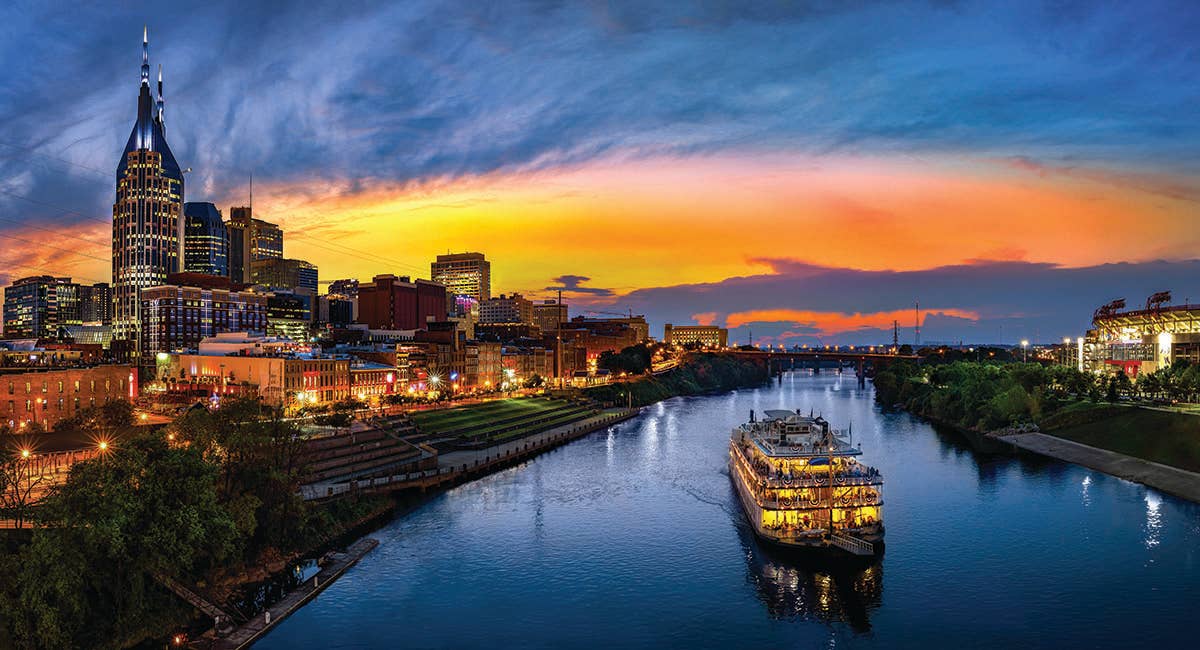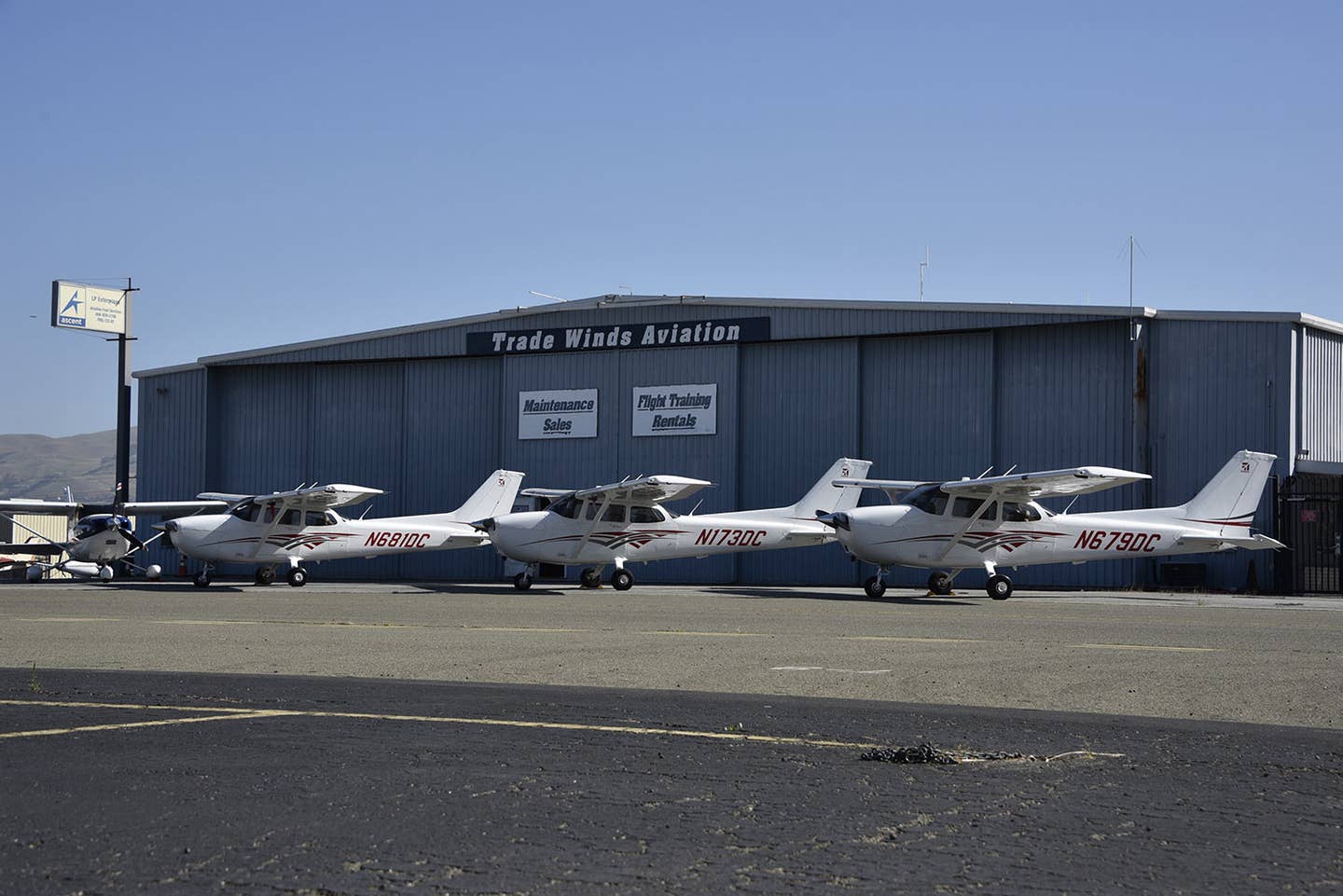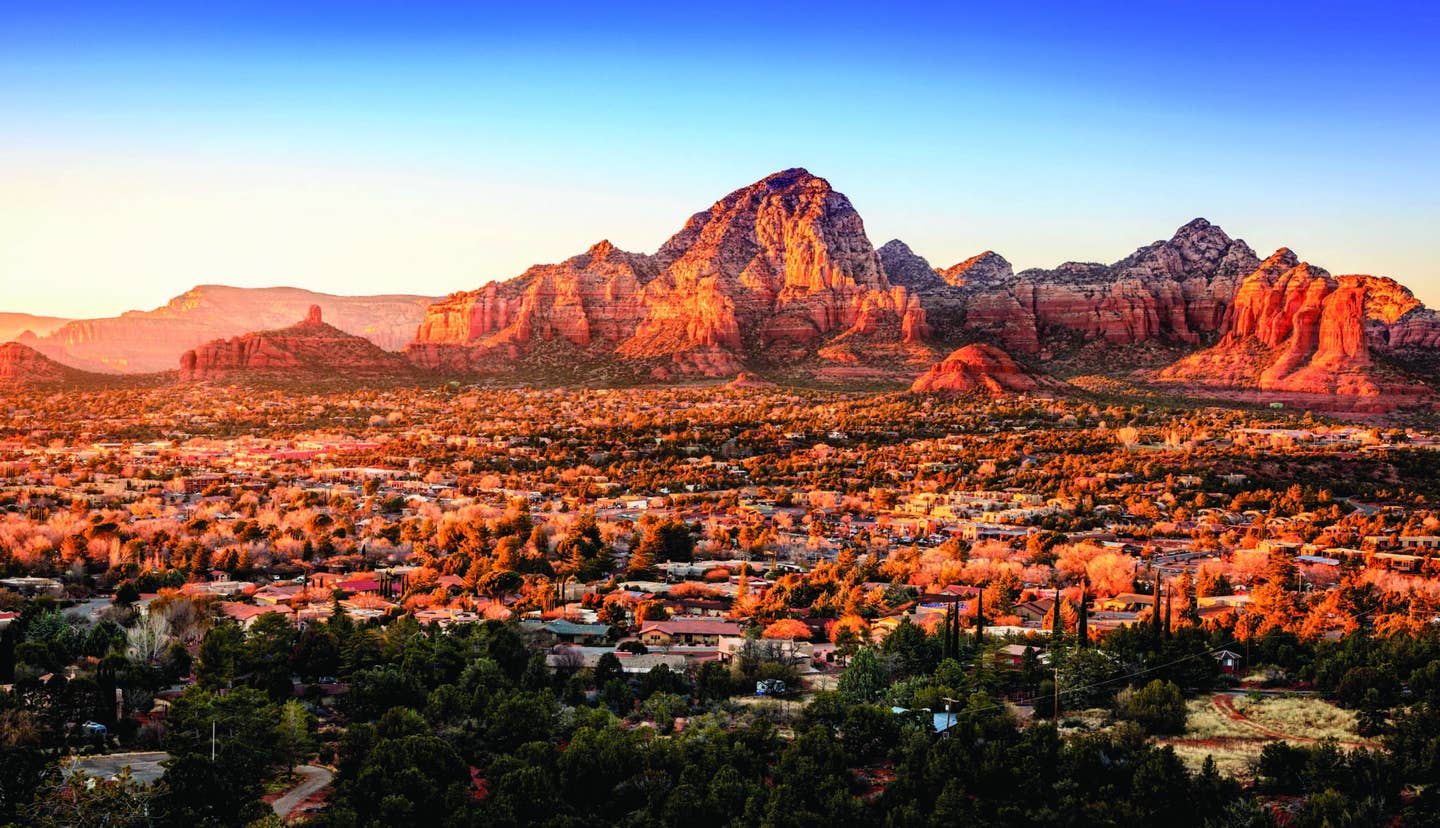Nashville: A Fly-In Must See and Do
While country music is its “biscuit and butter,” Nashville has some surprises, including a rich aviation history.

The General Jackson, a 300-foot paddle wheel showboat, provides dinner cruises and musical entertainment as you cruise the Cumberland River which traverses Nashville. [Credit: Adobe Stock]
The world's country music capital is a fly-in must see and do. The sound of guitars, drums, and vocals streams out of open doors as you walk past the numerous downtown bars and honky tonks on Broadway Street, where some of the nation’s best pickers, players, singers, and songwriters go to get discovered by the record labels.
Their names dot the streetscape on the signs of dining and drinking establishments. You’ll find Kid Rock’s Big Ass Honky Tonk & Rock ‘N’ Roll Steakhouse, Dierks Bentley’s Whiskey Row, and Miranda Lambert’s Casa Rosa, to name a few.
Known for its excellent acoustics, the historic Ryman Auditorium, built in 1892 as the Union Gospel Tabernacle, and the former home of the Grand Ole Opry, is a popular downtown concert venue and offers daytime tours.
In 1974, the Opry—a country music and variety radio show that started in 1925 and enjoyed a 31-year tenure at the Ryman—moved 11 miles northeast to the 4,300-plus-seat Grand Ole Opry House theater built especially for it.
Backstage tours of the Opry House offer an inside look into the history and mystique of the show that’s known for turning novice singers into stars.
While country music is the city’s biscuit and butter, Nashville has some surprises. The state capitol, built in the 1840s, is an excellent example of Greek Revival architecture—and its original architect is entombed within its walls. The city encompasses more than 20 colleges/universities, a full-scale replica of the Greek Parthenon and its 42-foot sculpture of the Greek goddess Athena, and is the resting place of U.S. President James K. and Mrs. Polk.
The Southern hospitality of this Bible Belt community combines with its street performer aura to create a unique and sometimes kitschy culture. The city has 700 churches—the oldest dating to 1847—and it’s also home to the Tennessee Titans NFL team, the Nashville Predators National Hockey League team, and the minor league Nashville Sounds baseball team.
The Lay of the Land
Set against the curves of the Cumberland River, Nashville is a metropolis of nearly 2 million people, yet it maintains the qualities of a much smaller city. Rimmed on three sides by ridges (the Highland Rim), the Nashville or Central Basin is characterized by low rolling hills covered alternately with forest, pasture, and grasslands.
Radnor Lake, a state natural/protected area, lies within the city limits, but activities there are restricted to hiking and wildlife observation. For watersports and fishing, visit nearby J. Percy Priest, a 14,000-acre Corps of Engineers dam-constrained lake. Just a 15-minute drive from downtown, the lake offers boating, camping, fishing, swimming, and other recreational opportunities.
Old Hickory Lake, named for President Andrew Jackson, is northeast of Nashville and offers a similar variety of activities.
Outdoor Diversions
Greenspaces abound within the city itself. Centennial Park in Nashville’s West End neighborhood is a favorite for locals. The site of the 1897 Tennessee Centennial and International Exposition (the World’s Fair), the only remaining park structure erected for the World’s Fair is a replica of the Greek Parthenon. The building was restored in 1931 and houses the tallest indoor sculpture in the Western Hemisphere, Athena, a nod to Nashville’s claim to being the “Athens of the South.” From the park, visitors can cross the street and stroll nearby Vanderbilt University, a national arboretum. The campus’s Bicentennial Oak, estimated to be 250 years old, predates the university itself.
The 5-acre Riverfront Park downtown beckons people to bask on the shores of the Cumberland River. The grassy incline creates natural seating for the park’s outdoor amphitheater, which hosts musical performances throughout the year, and the city’s annual “Let Freedom Sing” July 4th celebration.
You can find a different perspective of the city from the water. A variety of outfitters offer kayaking and stand-up paddle board tours on the Cumberland River. The General Jackson, a 300-foot paddle wheel showboat, provides a more elaborate experience with lunch or dinner cruises that include musical entertainment, as well as watching the river flow by in the boat's wake.
City Scene
As America’s “Music City,” a trip to Nashville wouldn’t be complete without visiting the Country Music Hall of Fame and Museum. The “custodian” of the country (and western) music art form, the museum started in 1967 but moved to its current location in 2001. Today, the facility includes 350,000 square feet of exhibits, galleries, event space, and archives. It also operates year-round educational programs and the Hatch Show Print letterpress business on the museum grounds.
Don’t miss the Music City Walk of Fame, which pays homage to those who “make, create, record, perform, and present music” of all genres. The Walk of Fame includes a star for the Fisk University Jubilee Singers. In 1871, the a cappella ensemble, which consisted of mostly former enslaved people, organized to raise money for the historically Black university. The first musical act to tour globally, the ensemble is credited with starting the city’s musical heritage and earning it its Music City nickname.
Get a glimpse into the business side of the music industry with a visit to Nashville’s Music Row, centered around 16th and 17th Avenues South. The neighborhood is home to RCA Studio B, established in 1956 and listed in the National Register of Historic Places, as well as a number of other historic recording studios. A ride on the Nashville Old Town Trolley Tours offers insight into the industry, history, and businesses of Music Row—named a National Treasure by the National Trust for Historic Preservation.
Country music fans may also enjoy a visit to the Johnny Cash Museum, which houses the most comprehensive collection of artifacts and information related to the singer known as the “Man in Black.” But despite its preeminence, it’s not all about country music in Nashville. The city boasts the largest professional ballet and largest opera companies in the state, and the Grammy Award-winning Nashville Symphony.
Nashville also played a role in developing jazz and the blues. In the 1940s, clubs on Jefferson Street, once the northern edge of town, hosted entertainers such as Little Richard, Otis Redding, Etta James, Billy Cox, and Ray Charles.
Today, the National Museum of African American music in downtown Nashville—the only museum of its kind—brings the stories of Black musicians of all genres to life.
Dining and shopping options are plentiful with each of the city’s unique neighborhoods providing a different ambiance. The Gulch, for example, a mixed-use LEED-certified community on the southwest edge of downtown, features restaurants that range from the Whiskey Kitchen to The Turnip Truck Urban Fare, and retail shops that include globally recognized brands, such as Urban Outfitters and Lucchese, as well as a wide range of boutiques for a more small-town shopping feel.
With 27 breweries and taprooms, Nashville is gaining a reputation for craft beer, and the Belle Meade Historic Site and Winery and nearby Natchez Trace Wine Trail offer wine-tasting. For more potent spirits, take a one-and-a-half-hour drive to Lynchburg, for a tour and tasting at the Jack Daniel’s Distillery.
History
There are a cornucopia of interesting sites in and around Nashville for history buffs. Founded in 1779, the city was named for Francis Nash, a general in the Continental Army and a Revolutionary War hero. Originally called Fort Nashborough, a replica of the early fort and interpretive displays can be toured at Riverfront Park.
The Hermitage, the plantation home of Andrew Jackson, the seventh president of the U.S., sits 12 miles east of Nashville. The home turned museum offers tours and exhibits that detail Jackson’s life as a politician, husband, and owner of enslaved people. The 1,100-acre estate is also the final resting place for Jackson and his wife, Rachel.
An historic shipping and railway hub, Nashville was the first Confederate state capital taken by Union troops during the Civil War. This victory of the Union forces is thought to have resulted in the ultimate demise of the Confederacy. A white granite and bronze monument erected on the battleground property, south of the city center, commemorates the 1864 Battle of Nashville, its soldiers who died in the battle, as well as those who perished in World War I. The city’s turn-of-the-century, Gothic-design Union Station, built in 1900 as a transportation terminal for the Louisville and Nashville Railroad, is a must-see for its well-preserved architectural features. Now a hotel, restaurant, and event venue, the station is listed in the National Register of Historic Places.
The city also features a rich aviation history. During World War II, Vultee Aircraft produced the Lockheed P-38 Lightning fighter at a factory adjacent to Berry Field airport—now Nashville International (KBNA)—becoming the first military defense enterprise for the region. At one time, when owned by Avco, the plant made parts for aircraft that ranged from the Convair B-36, Lockheed C-130, McDonnell-Douglas F-4 Phantom II, C-141, and Bell Huey and Cobra helicopters, along with the space shuttle and rockets. Now owned by Tect Aerospace, the factory still operates today.
Flying yourself to the city? Don’t miss a flyover of the abandoned Cornelia Fort Airpark (once M88) in East Nashville. The airfield is named for the city’s first female flight instructor, who was also the first U.S. pilot to encounter Japanese air forces during the Pearl Harbor attack, and the first woman pilot to die while on active duty—as a member of the Women Airforce Service Pilots (WASPs). Built in the 1940s, the airpark closed in 2011, following the 1,000-year flood of 2010. It’s most known for its inbound air passengers, country singers Patsy Cline, Hawkshaw Hawkins, and Cowboy Copas, who on March 5, 1963, died when their aircraft crashed 90 miles west of its destination in Camden, Tennessee. While no longer an active airstrip, once a month from May to August, the Shelby Park and Bottoms community hosts a benefit event called the Cornelia Fort Pickin’ Party.
Local Events & Festivals
| October 15: | Tennessee Beer, Wine & Shine Festival, Two Rivers Mansion |
| October 18: | Gospel Music Association Dove Awards, Lipscomb University |
| November/December: | Gaylord Opryland's A Country Christmas, Opryland Hotel |
| March 2023: | Tin Pan South, The world's largest songwriter festival, Downtown |
| April 2023: | Rock 'N' Roll Marathon, Downtown |
This article was first published in the 2022 Southeast Adventure Guide of FLYING Magazine.

Sign-up for newsletters & special offers!
Get the latest FLYING stories & special offers delivered directly to your inbox






